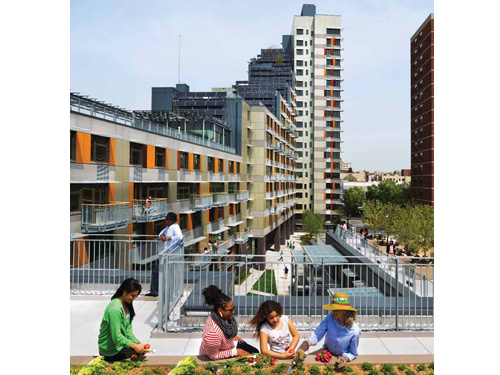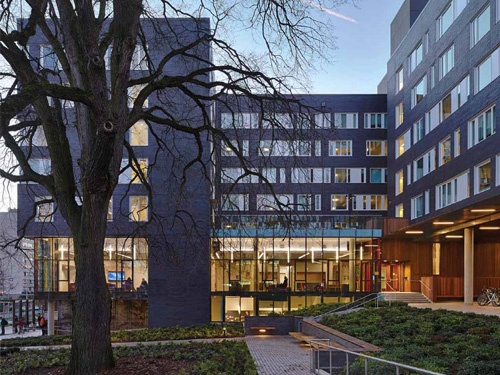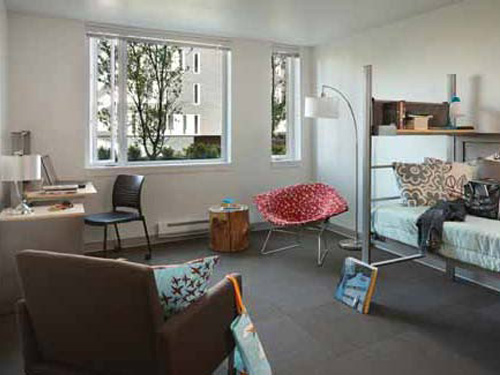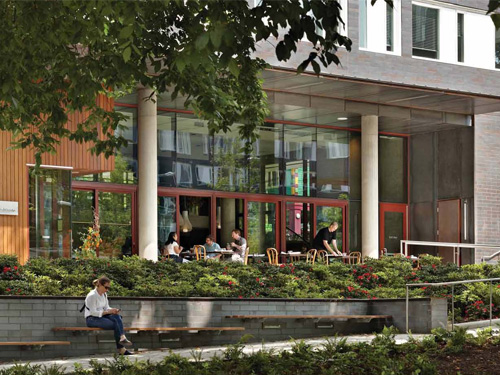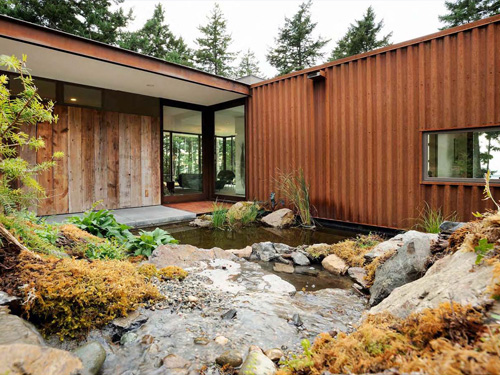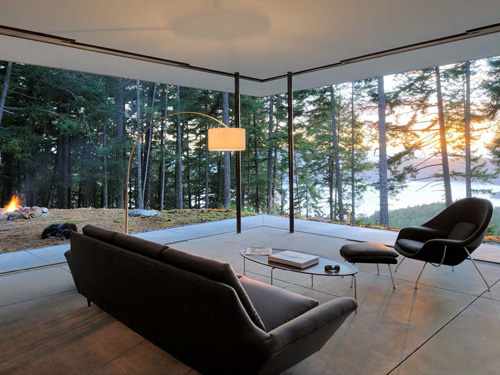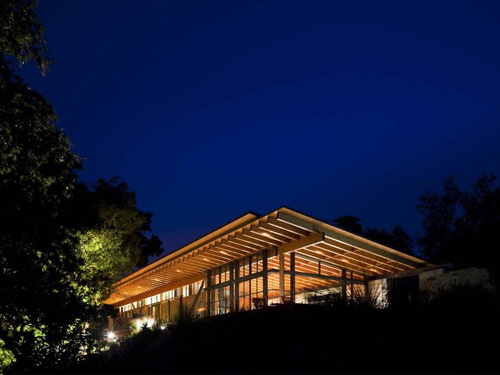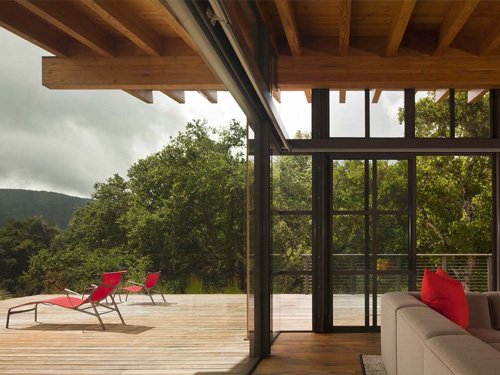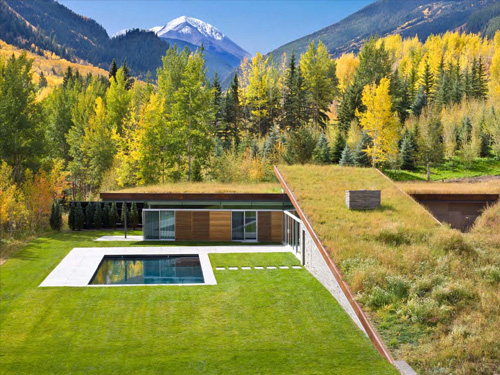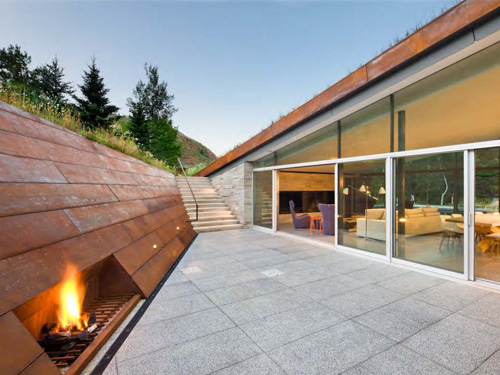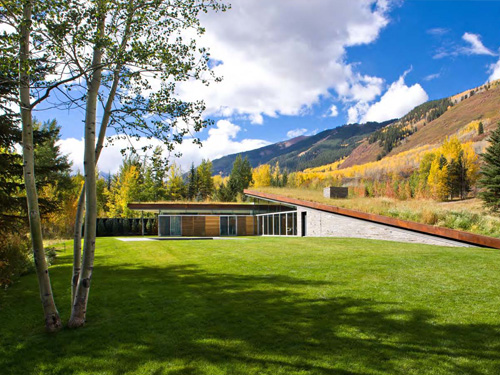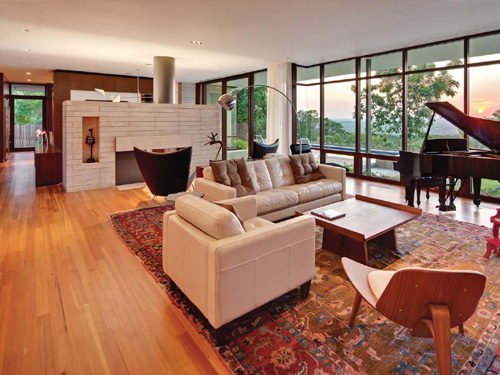The American Institute of Architects has selected the six recipients of the 2013 Housing Awards. The AIA’s Housing Awards Program, now in its 13th year, was established to recognize the best in housing design and promote the importance of good housing as a necessity of life, a sanctuary for the human spirit and a valuable national resource.
The jury for the 2013 Housing Awards includes: Kathleen Dorgan, AIA, Chair, Dorgan Architecture & Planning; John Isch, AIA, RWA Architects, Inc.; R. Thomas Jones, AIA, California Polytechnic State University; Stephen Sharpe, Hon. AIA and Charles L. Travis, AIA, The Housing Studio, P.A.
The jury recognized projects in four award categories: One/Two Family Custom Housing, One/Two Family Production Housing (none selected this year), Multifamily Housing and Special Housing.
Here's a recap of the winners (all images and descriptions courtesy AIA):
Multifamily Living Category
Via Verde - The Green Way; Bronx, New York
Dattner Architects and Grimshaw Architects
This mixed-use complex provides healthy, affordable urban living for low- and middle-income residents of the South Bronx. Built on a former brownfield site, the project comprises three building types: a 20-story tower, a 6- to 13-story midrise duplex apartment component, 2- to 4-story town houses, 222-unit complex includes.
Large windows, typically on two exposures, allow cross-ventilation and provide abundant daylighting. The garden begins as a courtyard on grade and steps up through a series of south-facing roof terraces. The terraces, many of which are accessible to residents, feature a small apple orchard and plots for growing vegetables while also providing storm water control, enhanced insulation, and mitigation of the urban heat island effect. Rainwater is collected and recycled for irrigation.
Specialized Housing Category
West Campus Housing - Phase I; Seattle
Mahlum Architects
Providing housing for 1,650 students in five buildings this project is the first phase of a student housing expansion for the university. The project has created a new walkable, transit-oriented neighborhood. To ensure the project is woven into the fabric of the city, it includes a number of publicly accessible spaces, including a 116-seat restaurant, 7,000-square-foot grocery store, café, conference center, academic support center, health and wellness center, and two retail spaces.
The exterior material palette was kept simple and economical: imperial-sized brick, white vinyl windows, wood, and weathering steel. Interior materials—mostly recycled, with no VOC content—were selected on the basis of reducing the energy required for shipping and manufacture.
One/Two Family Custom Housing Category
Eagle Ridge; Eastsound, Washington
Gary Gladwish Architecture
This project consists of a combined kitchen-dining-living area, study, master suite, art studio, and storage area, with the flexibility to add bedrooms or an apartment. To meet the client’s requirement that the house be highly efficient, it is constructed of structural insulated panels (SIPS). This method allows for a faster construction time, less waste generation, tighter construction, and better insulation. All the windows and doors are designed to surpass energy code requirements, and all of the lighting is either LED or compact fluorescent to reduce energy consumption. The siting and design of the house maximize passive solar benefits to reduce the energy load.
Halls Ridge Knoll Guest House; San Francisco
Bohlin Cywinski Jackson
The building is carefully detailed in stone, timber, and glass to respond to the site’s rolling topography, a forest of ancient live oaks and manzanita, and panoramic views of the San Clemente Mountains and Los Padres National Forest beyond. A stone wall anchors the building to the sloping site and screens the house and pool. A simple timber-framed shed roof springs from the stone wall, supporting naturally weathered zinc roofing over cedar-clad volumes. Expansive windows provide natural lighting throughout the house, and a broad overhanging roof provides shade from the intense summer sun. Sliding doors and operable hopper windows throughout the house use the prevailing winds for natural ventilation, while also providing expansive views of the mountain range.
House in the Mountains; Colorado
GLUCK+
Roof planes appear as native mountain meadows, making the structure practically invisible from the road above. These green roofs not only provide a super-insulated envelope but also preserve and highlight the original view from the existing house. Continuous clerestory windows wrap around the interior, screening out the road and revealing a spectacular mountain panorama. This clerestory creates a completely daylit space, with lighting necessary only at night. Solar panels are incorporated in the building façade. A retaining wall, clad in Cor-ten steel and cement board, slices diagonally across the site, capturing one side of the solar courtyard and, on the other, forming a private sunken court adjacent to the main living area.
Lake View Residence; Austin, Texas
Alterstudio Architecture LLP
The 5,900-square-foot house emphasizes views and a dynamic spatial sequence. A rich palette of materials on the interior, including mahogany cabinetry and longleaf pine floors, combines to create a warm environment. Oriented for optimal cross-ventilation and protection from the sun without eschewing the view westward, this project also features geothermal HVAC systems, a photovoltaic array, reflective TPO roofing, cellular foam insulation, tankless water heaters, and FSC-certified and reclaimed woods. The house also takes advantage of the tree canopy to provide additional shading, and carefully placed skylights bring diffused daylight to the interior and help reduce reliance on electric lighting.
Related Stories
Women in Design+Construction | May 28, 2024
Commerce Department launches Million Women in Construction Community Pledge
The U.S. Department of Commerce launched its Million Women in Construction Community Pledge this month to boost the ranks of women in construction companies. Federal investments are creating a construction boom that is increasing job opportunities for construction and trade workers.
Laboratories | May 24, 2024
The Department of Energy breaks ground on the Princeton Plasma Innovation Center
In Princeton, N.J., the U.S. Department of Energy’s Princeton Plasma Physics Laboratory (PPPL) has broken ground on the Princeton Plasma Innovation Center (PPIC), a state-of-the-art office and laboratory building. Designed and constructed by SmithGroup, the $109.7 million facility will provide space for research supporting PPPL’s expanded mission into microelectronics, quantum sensors and devices, and sustainability sciences.
MFPRO+ News | May 24, 2024
Austin, Texas, outlaws windowless bedrooms
Austin, Texas will no longer allow developers to build windowless bedrooms. For at least two decades, the city had permitted developers to build thousands of windowless bedrooms.
Resiliency | May 24, 2024
As temperatures underground rise, so do risks to commercial buildings
Heat created by underground structures is increasing the risk of damage to buildings, recent studies have found. Basements, train tunnels, sewers, and other underground systems are making the ground around them warmer, which causes soil, sand, clay and silt to shift, settle, contract, and expand.
Sports and Recreational Facilities | May 23, 2024
The Cincinnati Open will undergo a campus-wide renovation ahead of the expanded 2025 tournament
One of the longest-running tennis tournaments in the country, the Cincinnati Open will add a 2,000-seat stadium, new courts and player center, and more greenspace to create a park-like atmosphere.
Mass Timber | May 22, 2024
3 mass timber architecture innovations
As mass timber construction evolves from the first decade of projects, we're finding an increasing variety of mass timber solutions. Here are three primary examples.
MFPRO+ News | May 21, 2024
Massachusetts governor launches advocacy group to push for more housing
Massachusetts’ Gov. Maura Healey and Lt. Gov. Kim Driscoll have taken the unusual step of setting up a nonprofit to advocate for pro-housing efforts at the local level. One Commonwealth Inc., will work to provide political and financial support for local housing initiatives, a key pillar of the governor’s agenda.
Building Tech | May 21, 2024
In a world first, load-bearing concrete walls built with a 3D printer
A Germany-based construction engineering company says it has constructed the world’s first load-bearing concrete walls built with a 3D printer. Züblin built a new warehouse from a single 3D print for Strabag Baumaschinentechnik International in Stuttgart, Germany using a Putzmeister 3D printer.
MFPRO+ News | May 21, 2024
Baker Barrios Architects announces new leadership roles for multifamily, healthcare design
Baker Barrios Architects announced two new additions to its leadership: Chris Powers, RA, AIA, NCARB, EDAC, as Associate Principal and Director (Healthcare); and Mark Kluemper, AIA, NCARB, as Associate Principal and Technical Director (Multifamily).
MFPRO+ News | May 20, 2024
Florida condo market roiled by structural safety standards law
A Florida law enacted after the Surfside condo tower collapse is causing turmoil in the condominium market. The law, which requires buildings to meet certain structural safety standards, is forcing condo associations to assess hefty fees to make repairs on older properties. In some cases, the cost per unit runs into six figures.




